php editor Apple has the answer for you: When using the motherboard, if the STAT interface is not enough, you can consider the following solutions. First, you can increase the number of STAT interfaces by purchasing a SATA expansion card. Secondly, if there are extra PCIe slots, you can choose to install a SATA controller card to expand the interface. In addition, you can also consider using a USB to SATA adapter to connect some devices that do not require high-speed transmission to the USB interface. Finally, if you need higher transfer speeds, you can consider using NVMe solid-state drives. They usually use the M.2 interface and do not occupy the STAT interface. Hope the above solutions are helpful to you!

Is the motherboard’s STAT interface not enough?
1 Yes,. 2 The motherboard's insufficient STAT interface may be due to the fact that there are too many connected hard drives or other devices, resulting in insufficient interfaces to meet the needs of all devices. 3 In modern computers, hard drives, optical drives, solid-state drives and other devices need to be connected using the STAT interface. With the development of technology, people have increasing demands for storage capacity and speed, so more devices may need to be connected. . In this case, the motherboard's STAT interface may not be sufficient. 4 In order to solve this problem, you can consider using an expansion card or replacing the motherboard to increase the number of STAT interfaces. Expansion cards can provide additional interfaces to meet the connection needs of more devices. In addition, choosing a motherboard with more STAT interfaces is also a solution. 5 In short, when the STAT interface of the motherboard is not enough, corresponding measures need to be taken to increase the number of interfaces to meet the needs of device connection.
What should I do if the SATA interface and power interface are not enough?
If the SATA interface and power interface are not enough, you may need to consider using SATA and power extender to expand the number of interfaces. These expanders provide additional SATA and power slots on the computer motherboard, allowing you to add more devices by plugging in SATA and power data cables. However, it should be noted that the power and current of the expander cannot exceed the load capacity of the motherboard and power supply, otherwise it may cause short circuits, damage to hardware and other problems. Therefore, before using the extender, be sure to confirm the performance of the computer motherboard and power supply and follow safety regulations.
Is there any solution if the host SATA interface is not enough?
When the host SATA interface is not enough, you can consider the following methods: Use a SATA expansion card. You can purchase a SATA expansion card (such as a PCIe to SATA card) and insert it into the PCIe slot of the motherboard to expand more SATA interfaces. Replace the motherboard. If the number of SATA interfaces on the motherboard is really not enough, you can consider replacing the motherboard with one with more SATA interfaces. Use external storage devices. If the SATA interface cannot meet the needs, you can consider using external storage devices, such as USB hard disk boxes, mobile hard disks, etc. It should be noted that when using an external storage device, the transfer speed may be slower than the internal hard drive, and you need to ensure that the power supply is sufficient. The above are several methods to solve the problem of insufficient host SATA interface. Which method to choose depends on personal needs and actual conditions.
What should I do if the sata interface on the motherboard is not enough?
If the motherboard SATA interface is not enough, you can consider using a SATA expansion card. This expansion card can add more SATA interfaces to meet the connection needs of more hardware devices.
What should I do if the sata interface on the motherboard is not enough?
If the SATA interface on your motherboard is not enough, you can try the following solutions:
Install a SATA controller card. This is a method to expand the number of SATA interfaces on the motherboard. This card plugs into the motherboard's PCI-E slot and provides an additional SATA connector for connecting additional hard drives or other SATA devices.
Use an external hard drive. It's an easy way to expand your storage space by using an external hard drive that connects to your computer's USB or Thunderbolt port and stores files and data.
Consider using SSD hard drive. Unlike mechanical hard drives, SSD hard drives can be connected through the motherboard's M.2 slot or PCI-E slot without using a SATA interface.
Delete unnecessary data and programs to free up storage space. If you have a lot of unnecessary data and programs stored on your hard drive, you can delete them to free up space.
It should be noted that before performing any of these operations, it is recommended that you back up important data to prevent data loss or damage.
What should I do if the motherboard’s SATA port is insufficient?
If the SATA ports on your motherboard are not large enough to connect all the required devices, you have a few options to solve the problem:
1. Add a SATA expansion card: You can purchase a SATA Expansion card (also known as SATA controller card), which plugs into the motherboard's PCIe slot. This allows you to add additional SATA ports to meet your needs. Make sure to select the appropriate expansion card that is compatible with your motherboard and operating system.
2. Use an M.2 adapter card: If your motherboard has one or more M.2 slots and you need to connect more SATA devices, you may consider using an M.2 adapter Accept the card. These riser cards convert M.2 slots into additional SATA ports, allowing you to connect more SATA devices.
3. Use a hard drive expansion box or external storage: If you only need temporary or external storage, you may consider using a hard drive expansion box or external storage device. These devices connect to the computer through a USB interface without using the SATA port on the motherboard.
4. Re-plan your device connections: If the SATA port on your motherboard is really not enough, and you cannot add expansion cards or use external storage, you may need to re-plan your device connections. Consider optimizing the use of existing equipment, such as consolidating multiple drives onto a single drive or using a network storage solution.
It should be noted that choosing the appropriate solution is based on your specific situation and needs. If you are not sure how to operate or need more help, it is recommended to consult professional computer hardware technical support or seek professional advice.
What should I do if the SATA port on the motherboard is not enough?
If your motherboard's SATA interface is not enough, there are several ways to solve this problem:
Use a SATA expansion card: You can install a SATA expansion card into a PCI slot or PCI Express slot to expand more SATA interfaces. This method is usually suitable for users who need to connect a large number of hard drives or other SATA devices.
Use an external hard drive enclosure: If you need to connect an additional hard drive, you may consider using an external hard drive enclosure. These boxes usually use USB or eSATA connections, and you can expand additional storage by connecting to a USB or eSATA port on your computer.
Confirm that you are using all existing SATA ports: Sometimes, not all of the SATA ports on the motherboard are used. You can check your motherboard manual to confirm whether all SATA ports are being used. If there are unused SATA ports, you can use them to connect more SATA devices.
Use other interfaces: In addition to the SATA interface, there are other types of interfaces that can connect storage devices, such as IDE or SCSI interfaces. You may consider using these connectors to connect additional storage devices.
It should be noted that if you use a SATA expansion card or other types of interfaces, you need to ensure that your computer can support these interfaces, and you need to install the appropriate drivers to ensure that these devices can work properly.
The above is the detailed content of Is the motherboard's STAT interface not enough?. For more information, please follow other related articles on the PHP Chinese website!
 主板电源线插错会烧吗?Jan 30, 2024 pm 09:45 PM
主板电源线插错会烧吗?Jan 30, 2024 pm 09:45 PM主板电源线插错会烧吗?是的有可能,比如说你把USB插针接线插乱了,以后你插入USB设备时,就可能烧掉USB设备或者主板上的USB控制电路;再比如你把“重启”按钮的接线插在电源指示灯或者硬盘指示灯插针上了,你以后按下重启按钮时,可能会烧掉主板上的指示灯电路。但是这些故障发生的可能性比较小,即使发生了也只是烧坏主板上的某一小部分电路使它不能工作,不会造成整块主板都烧坏不能启动运行的故障。话说主板上的线如果插错了.会不会烧坏硬件?主板上的线如果插错了有可能会发生烧坏硬件的情况产生,这是因为一旦相关硬件
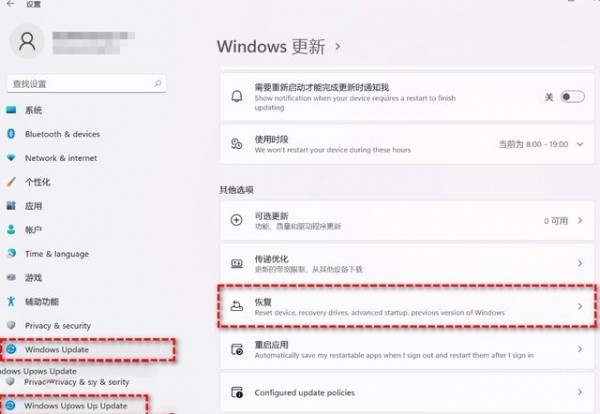 教你如何回退到上一个版本的Win11 23H2Jan 29, 2024 pm 06:57 PM
教你如何回退到上一个版本的Win11 23H2Jan 29, 2024 pm 06:57 PMWin1123H2正式版就在近期推送啦,很多的用户们在升级完后觉得一些操作使用得不是很喜欢,那么Win1123H2如何退回上一个版本?下面就让本站来为用户们来仔细的介绍一下升级完Win1123H2退回上一个版本的三种教程吧。升级完Win1123H2退回上一个版本的三种教程方法一:从设置菜单退回1、点击任务栏的开始菜单,然后单击设置选项,选择Windows更新,然后点击恢复。3、选择退回的原因,然后点击下一步。4、你将看到检查更新的通知,选择不,谢谢。5、阅读需要了解的内容,然后点击下一页。6、阅
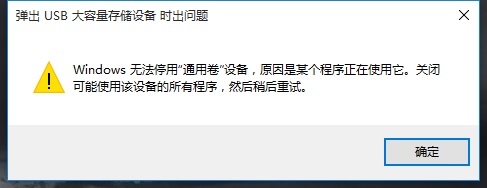 解决win11无法安全弹出移动硬盘的方法Jan 30, 2024 pm 05:45 PM
解决win11无法安全弹出移动硬盘的方法Jan 30, 2024 pm 05:45 PM许多用户在连接Win11电脑后,发现无法安全弹出移动硬盘。他们尝试了多次但都失败了,最后只能强行拔出。那么,如何解决这个问题呢?在这里,本站小编为大家提供了两种解决方法,让我们一起来看看详细的操作步骤吧。3、在其中找到并右键Windows资源管理器,选择重新启动。2、打开后,输入MSConfig,回车运行。4、然后勾选隐藏所有Microsoft服务,点击全部禁用。
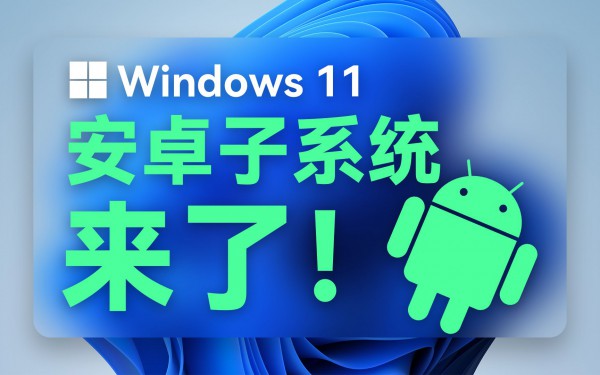 Win11安卓子系统启动问题解决方法(已解决)Jan 30, 2024 pm 07:18 PM
Win11安卓子系统启动问题解决方法(已解决)Jan 30, 2024 pm 07:18 PMWin11系统带来一项全新功能,即安卓子系统(WSA),用户不用通过安卓模拟器就能轻松运行安卓应用和安卓游戏。不过有时候也会遇到安卓子系统无法启动的情况,这要如何解决?下面就来看看小编整理的操作流程吧。
 硬盘全新安装mac(新硬盘安装macos)Jan 31, 2024 pm 05:00 PM
硬盘全新安装mac(新硬盘安装macos)Jan 31, 2024 pm 05:00 PM本站将分享有关硬盘全新安装Mac的内容,如果能解决您的问题,请关注。现在开始!如何在mac上安装固态硬盘?首先,使用专门拆卸产品的小号螺丝刀,将笔记本电脑机身下方的八个小型螺丝拆卸下来。这样就可以打开笔记本电脑的后盖了。需要特别注意的是,在打开的过程中要小心,避免用力过猛,以免损坏电脑内部的元件。拆下主板后,将主板电源接头旋转90度,然后取出电源。之后,拆下硬盘,使用T9螺丝刀拧掉螺丝,然后更换为你想要的SSD固态硬盘。最后,按照相反的顺序将之前拆卸的零件重新安装回去。苹果笔记本可以安装固态硬盘
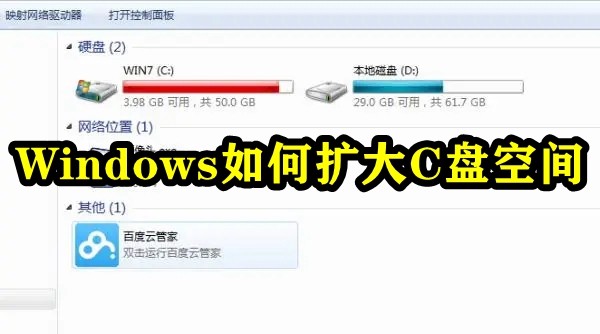 如何增加C盘的存储空间Jan 29, 2024 pm 04:48 PM
如何增加C盘的存储空间Jan 29, 2024 pm 04:48 PMc盘是电脑的系统盘,c盘空间不足会导致电脑运行卡顿,进而影响到软件和游戏的程序运行,即便是将软件程序安装到其他盘软件仍会占用c盘的空间,使用时间久了,当遇到c盘空间不足的情况时最好的解决办法就是扩大c盘的内存空间,本期小编整理了四种扩大c盘的办法,轻松解决c盘内存不足的问题。Windows如何扩大C盘空间方法1.使用DiskPart扩展C盘DiskPart是一个Windows系统自带的程序,它通过脚本或输入命令来处理磁盘、分区或卷。简单地说,要扩大C盘,需要在diskpart命令中输入“list
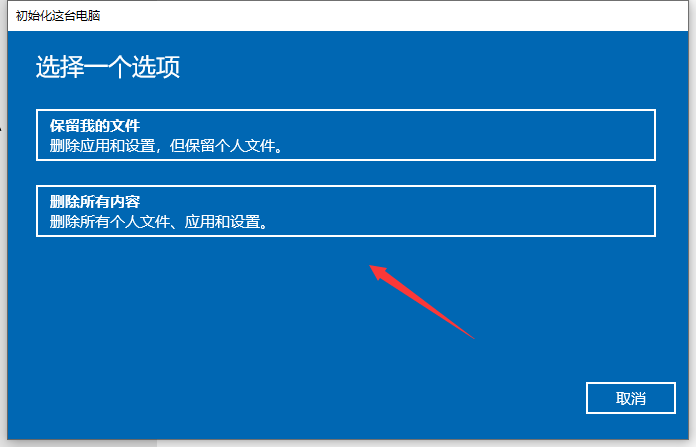 恢复Windows 10系统是否导致数据丢失?Dec 31, 2023 am 09:40 AM
恢复Windows 10系统是否导致数据丢失?Dec 31, 2023 am 09:40 AM我们在使用windows10系统的时候一定经历过还原,重装系统的经历。那么win10系统还原之后会不会丢失数据,win10系统还原会不会丢失文件数据,这个取决于你的选择。win10系统还原会丢失数据吗答:不会丢失个人数据以及文件夹的。如果电脑未正常运行,重置此电脑可能会解决问题。还原时,可以选保留个人文件或删除个人文件,然后重新安装Windows。对于这个问题,其实也简单,大家在Win10的「设置」→「更新和安全」-「恢复」中,就可以看到“重置此电脑”功能。从描述中可以看出,Win10重置电脑,
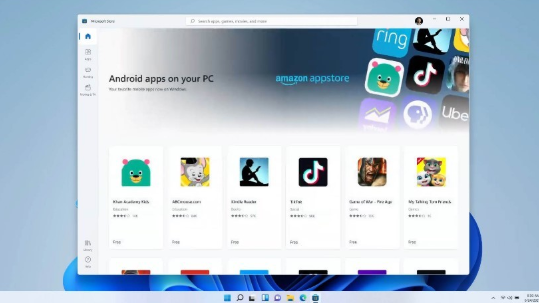 笔记本适合升级至Win11系统吗?探索笔记本升级至Win11系统的建议详解Jan 30, 2024 pm 05:27 PM
笔记本适合升级至Win11系统吗?探索笔记本升级至Win11系统的建议详解Jan 30, 2024 pm 05:27 PM现在的win11系统越来越稳定了,很多小伙伴都在问说笔记本建议升级Win11吗?小编个人认为是可以升级为win11系统,但也可以保留现在的系统继续使用,那么今天就来和多好讲解一下为什么建议升级到win11,一起来看看都有哪些原因吧。


Hot AI Tools

Undresser.AI Undress
AI-powered app for creating realistic nude photos

AI Clothes Remover
Online AI tool for removing clothes from photos.

Undress AI Tool
Undress images for free

Clothoff.io
AI clothes remover

AI Hentai Generator
Generate AI Hentai for free.

Hot Article

Hot Tools

MantisBT
Mantis is an easy-to-deploy web-based defect tracking tool designed to aid in product defect tracking. It requires PHP, MySQL and a web server. Check out our demo and hosting services.

mPDF
mPDF is a PHP library that can generate PDF files from UTF-8 encoded HTML. The original author, Ian Back, wrote mPDF to output PDF files "on the fly" from his website and handle different languages. It is slower than original scripts like HTML2FPDF and produces larger files when using Unicode fonts, but supports CSS styles etc. and has a lot of enhancements. Supports almost all languages, including RTL (Arabic and Hebrew) and CJK (Chinese, Japanese and Korean). Supports nested block-level elements (such as P, DIV),

Zend Studio 13.0.1
Powerful PHP integrated development environment

Dreamweaver CS6
Visual web development tools

Safe Exam Browser
Safe Exam Browser is a secure browser environment for taking online exams securely. This software turns any computer into a secure workstation. It controls access to any utility and prevents students from using unauthorized resources.







